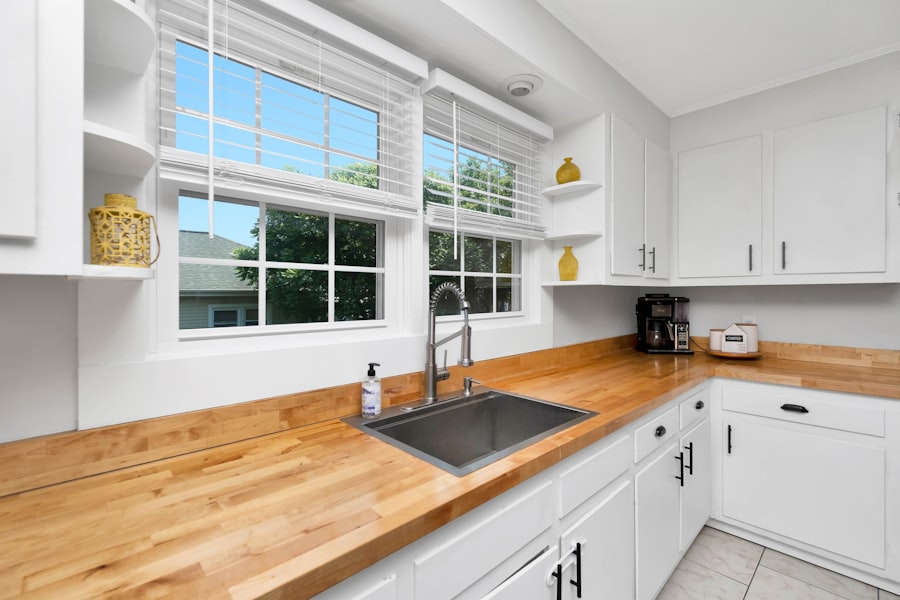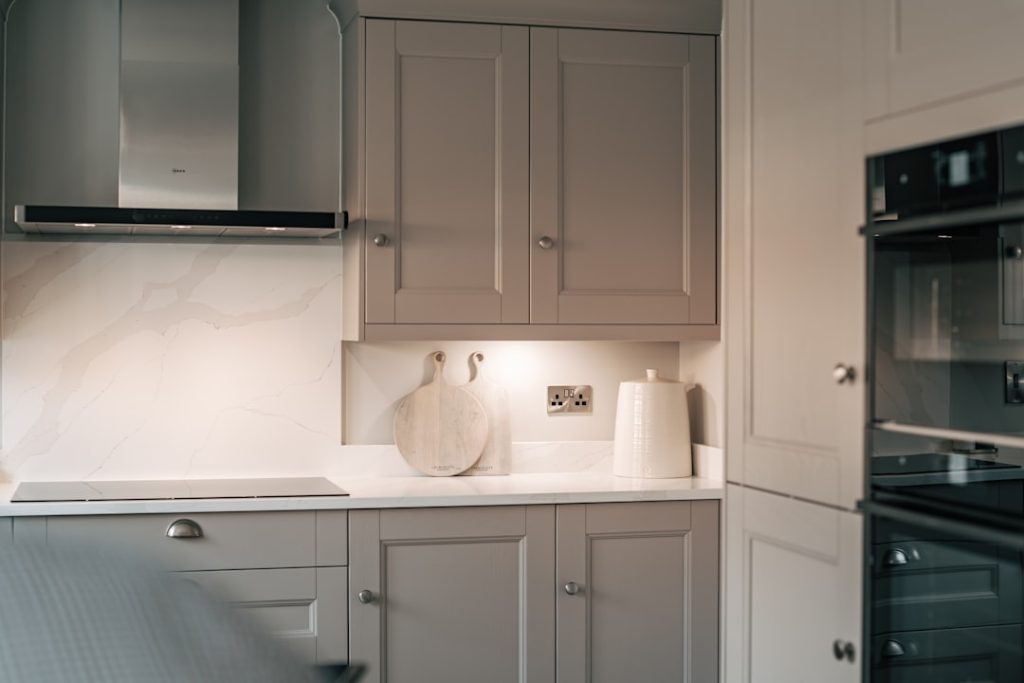The installation of new cabinets can significantly transform the aesthetic and functional aspects of a kitchen or bathroom. One of the most immediate benefits is the enhancement of storage space. Modern cabinets are designed with innovative features such as pull-out shelves, lazy Susans, and built-in dividers that maximize usability.
This increased storage capacity allows homeowners to organize their kitchenware, pantry items, and cleaning supplies more efficiently, reducing clutter and improving overall accessibility. For instance, a well-designed cabinet system can accommodate everything from pots and pans to small appliances, making it easier to find what you need when you need it. Beyond functionality, new cabinets can also elevate the visual appeal of a space.
With a plethora of styles, finishes, and colors available, homeowners can select cabinets that reflect their personal taste and complement their home’s overall design. Whether opting for sleek, modern cabinetry or classic, rustic designs, the right cabinets can serve as a focal point in the room. For example, white shaker cabinets can create a clean, contemporary look, while dark wood cabinets can add warmth and richness to a traditional kitchen.
The aesthetic upgrade not only enhances the enjoyment of the space but can also increase the home’s market value.
Key Takeaways
- New cabinets enhance kitchen functionality and aesthetic appeal.
- Cabinet costs vary based on materials, style, and installation method.
- Establishing a clear budget helps manage renovation expenses effectively.
- Choosing the right materials and styles impacts durability and design.
- Professional installation ensures quality but DIY can reduce costs if done carefully.
Factors Affecting the Cost of New Cabinets
When considering new cabinets, several factors come into play that can influence the overall cost. One of the primary determinants is the material used in cabinet construction. Solid wood cabinets tend to be more expensive than those made from engineered materials like MDF or particleboard.
The type of wood also matters; for instance, oak and cherry are generally pricier than pine or birch due to their durability and aesthetic appeal. Additionally, the finish applied to the cabinets—whether painted, stained, or left natural—can also affect pricing. Custom finishes often require more labor and time, leading to higher costs.
Another significant factor is the cabinet style and design complexity. Stock cabinets are typically more affordable as they are mass-produced and available in standard sizes. In contrast, custom cabinets are tailored to fit specific dimensions and design preferences, which can substantially increase costs.
Features such as intricate moldings, glass doors, or specialized hardware can also add to the price tag. Furthermore, geographical location plays a role; labor costs and material availability can vary widely depending on the region, impacting the overall budget for cabinet installation.
Setting a Budget for Your Cabinet Renovation

Establishing a budget for cabinet renovation is crucial to ensure that the project remains financially feasible. Start by determining how much you are willing to spend on new cabinets without compromising other essential aspects of your renovation. A good rule of thumb is to allocate about 30% of your total kitchen renovation budget to cabinetry.
This percentage can vary based on individual priorities and the scope of the project; for example, if you are planning a complete kitchen overhaul, you may want to invest more in high-quality cabinets. Once you have a rough estimate in mind, it’s essential to break down your budget into specific categories. Consider costs associated with materials, labor, and any additional features you may want to include.
It’s also wise to set aside a contingency fund—typically around 10-15% of your total budget—to cover unexpected expenses that may arise during installation. This proactive approach will help you avoid financial strain and ensure that your renovation stays on track.
Exploring Different Cabinet Materials and Styles
| Material | Durability | Maintenance | Style Options | Cost Range | Common Uses |
|---|---|---|---|---|---|
| Solid Wood | High | Moderate (requires polishing) | Traditional, Rustic, Modern | Medium to High | Kitchen, Bathroom, Living Room |
| Plywood | Moderate to High | Low to Moderate | Contemporary, Modern | Medium | Kitchen, Office |
| MDF (Medium Density Fiberboard) | Moderate | Low (easy to clean) | Modern, Painted Finishes | Low to Medium | Kitchen, Bathroom |
| Laminate | Moderate | Low (scratch resistant) | Modern, Contemporary | Low | Kitchen, Laundry Room |
| Thermofoil | Moderate | Low (easy to clean) | Modern, Smooth Finish | Low | Kitchen, Bathroom |
| Metal | High | Low (rust resistant coatings needed) | Industrial, Modern | Medium to High | Kitchen, Commercial Spaces |
| Glass | Low to Moderate | Moderate (requires cleaning) | Modern, Contemporary | Medium to High | Display Cabinets, Kitchen |
The choice of cabinet materials is one of the most critical decisions in any renovation project. Solid wood remains a popular option due to its durability and timeless appeal. Hardwoods like maple, oak, and cherry offer strength and longevity but come at a higher price point.
On the other hand, engineered materials such as plywood or MDF provide a cost-effective alternative while still offering decent durability and versatility in design. These materials can be finished in various ways to mimic the look of solid wood without the associated costs. In terms of styles, homeowners have an array of options ranging from traditional to contemporary designs.
Shaker-style cabinets are favored for their clean lines and simplicity, making them suitable for both modern and classic kitchens. Conversely, raised-panel cabinets add depth and detail, appealing to those who prefer a more ornate look. Additionally, open shelving has gained popularity as a way to showcase dishware or decorative items while providing an airy feel to the space.
The choice of style should align with both personal preferences and the overall design theme of the home.
When it comes to cabinet installation, homeowners often face the decision between hiring a professional contractor or opting for a DIY approach. Engaging a professional can provide peace of mind; experienced contractors possess the skills and tools necessary to ensure precise measurements and proper installation techniques. They can also navigate potential challenges that may arise during the process, such as plumbing or electrical adjustments that might be needed when replacing cabinets.
On the other hand, DIY installation can be an appealing option for those looking to save money or who enjoy hands-on projects. With numerous online resources available—such as video tutorials and step-by-step guides—many homeowners feel empowered to tackle cabinet installation themselves. However, it’s essential to realistically assess your skill level and available time before committing to this route.
Mistakes during installation can lead to costly repairs or even damage to new cabinets, which could negate any savings achieved through DIY efforts.
Hidden Costs to Consider When Renovating Your Kitchen with New Cabinets
While budgeting for new cabinets, it’s crucial to account for hidden costs that may not be immediately apparent. One common oversight is the expense associated with removing old cabinets. Depending on their condition and how they were installed, this process can require additional labor or even disposal fees if you need to hire a service for removal.
Additionally, if your new cabinets require modifications to existing plumbing or electrical systems—such as moving outlets or adjusting sink placements—these changes can add significant costs. Another often-overlooked expense is hardware selection. While it may seem minor compared to the cost of cabinets themselves, knobs, pulls, and hinges can add up quickly, especially if you opt for high-end finishes or custom designs.
Furthermore, consider any additional features you may want to incorporate into your cabinetry—such as soft-close mechanisms or built-in lighting—which can also contribute to increased costs. By anticipating these hidden expenses upfront, you can create a more accurate budget that reflects the true cost of your cabinet renovation.
Tips for Saving Money on New Cabinet Installation

Saving money on new cabinet installation doesn’t have to mean sacrificing quality or style; there are several strategies homeowners can employ to keep costs down without compromising their vision. One effective approach is to shop during sales events or clearance periods when retailers often offer significant discounts on cabinetry. Additionally, consider purchasing stock cabinets instead of custom options; while they may not offer the same level of personalization, stock cabinets are typically more affordable and readily available.
Another way to save is by opting for simpler designs that require less intricate craftsmanship. For instance, flat-panel doors tend to be less expensive than raised-panel options due to their straightforward construction. Furthermore, consider refinishing existing cabinets instead of replacing them entirely; this option not only saves money but also allows you to retain some original character in your kitchen or bathroom.
Lastly, if you choose to go the DIY route for installation, ensure you have all necessary tools and materials before starting to avoid last-minute purchases that could inflate your budget.
Maximizing the Value of Your Investment in New Cabinets
To truly maximize the value of your investment in new cabinets, it’s essential to consider both functionality and aesthetics in your design choices. Selecting high-quality materials will not only enhance durability but also contribute positively to your home’s resale value should you decide to sell in the future. Investing in features like soft-close drawers or pull-out shelves can improve everyday usability while appealing to potential buyers who prioritize convenience.
Additionally, maintaining your new cabinets is crucial for preserving their appearance and functionality over time. Regular cleaning with appropriate products will help prevent wear and tear while keeping surfaces looking fresh. Furthermore, consider periodic inspections for any signs of damage or wear; addressing issues early on can prevent more significant problems down the line.
By combining thoughtful design choices with diligent maintenance practices, homeowners can ensure that their investment in new cabinets continues to pay dividends for years to come.



